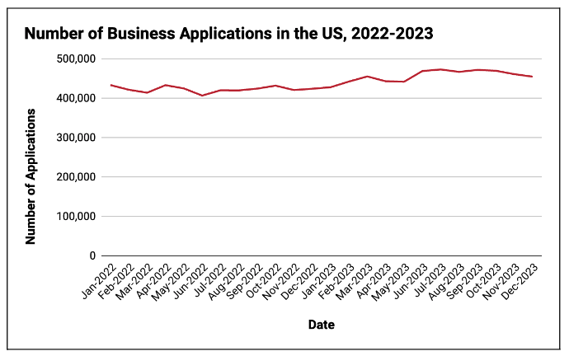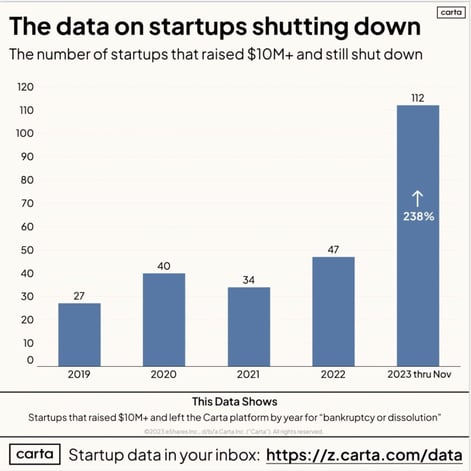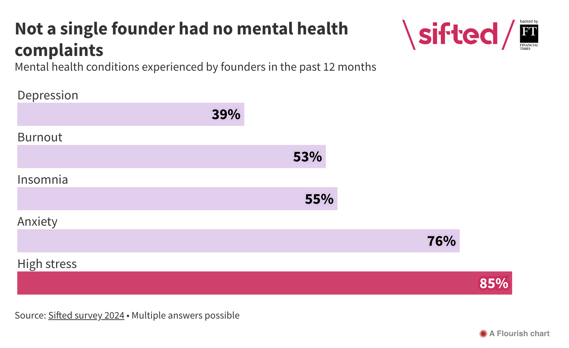|
|
The hardest part about building a successful product isn't actually building it: - **It's marketing it. Use a free SERP** checker tool to search for keywords to identify your best distribution channels, and learn from your competitors. - **When build
The hardest part about building a successful product isn't actually building it:
-
It's marketing it. Use a free SERP checker tool to search for keywords to identify your best distribution channels, and learn from your competitors.
-
When building for other founders, there are great opportunities to help new businesses, help failing businesses, or both.
-
$10K MRR. Rejection led to a new product for Viktor Hanacek, who cashed in by giving lots of things away for free.
Want your product seen by over 85,000 founders and businesses? Sponsor an issue of the Indie Hackers newsletter. Choose between 3 affordable tiers that can fit almost any budget.
An Underrated Way to Find Marketing Channels 🔎

by CodeBeboo
Before starting with marketing, you need to actually know your distribution channels. These are the places where your customers hang out. Knowing how to reach them is essential!
Common distribution channels
-
Social media platforms (YouTube, TikTok, Instagram, etc.).
-
Online forums (Indie Hackers, Hacker News, Reddit, etc.).
-
Email.
-
Blogs.
I've found an underrated way to determine which distribution channels to focus on by copying your competitors!
The formula
Here's how to do it:
-
Head to a free SERP checker.
-
Enter your main keywords.
-
Check the top 10 ranking sites for each keyword.
This will give you:
-
Bloggers who have written similar content: You can reach out to them to start building up those juicy backlinks!
-
Influencers in your niche: You can reach out to them for affiliate marketing.
-
Social media accounts: You can replicate what's working for the most successful ones, and start posting your own unique content.
For my site, Catfishes, I entered the keyword "AI influencer." I got results consisting of competitor products, Facebook pages in the niche, and blog posts on the subject. I think this was a useful way to get the gist of where my audience is hanging out, and what to target.
The key
The whole purpose of this is to gain an understanding of exactly which distribution channels you should be using to concentrate your marketing efforts. But this should be done after you've defined your ideal customer profile. You can niche down further later, if need be.
Ask yourself who would really need something like what your product offers. It's harsh, but sometimes the reason we say "Anyone would want it" is because actually no one does.
Truly ask yourself who would want it. For example: "People on a self-improvement journey." This already narrows things down. Perhaps you narrow down further to "People who read self-help books." This tells you that you should target self-help communities.
If you're B2C and you're good at creating content, you can easily leverage platforms like YouTube Shorts and TikTok, especially if your product has built in virality.
Start posting on TikTok, see what works and what doesn't, and keep pivoting. Sometimes, all it takes is one viral post for the ball to really start rolling!
Discuss this story.
In the News 📰

Build for the Rise (or Fall) of Businesses 🎭

from The Hustle newsletter
Starting a business is now considered the best way to build personal wealth. That could explain why Americans are leaping into entrepreneurship at record rates: Between 2021 and 2023, 5.2M business applications were filed.
Exciting times!

*Source: US Census Bureau
The not-so-exciting part? Many of them won't make it past the first year. Even buzzworthy startups that raised major capital (i.e. Ghost Autonomy) have faltered. Startup insolvencies are at record high.
But there's a silver lining: With a high volume of business activity, there are opportunities to capitalize on either end of the spectrum.
Companies are cashing in
We recently wrote about how legal tech is booming. In that category, LLC formation services are doing especially well, using technology to automate the tedious legal processes of starting a business:
- LegalZoom, known for its LLC formation services, did $660M+ ARR in 2023.
- Its competitor, ZenBusiness, also broke $45M in revenue last year.
On the other hand, many of the same processes apply to winding down a business, and that sector is getting traction, too:
-
Sunset, a dissolution consulting company, increased its revenue by nine times from Q4 2023 to Q1 2024.
-
SimpleClosure, another contender, raised $4M in February, and passed $1M ARR.
- Equity management unicorn Carta launched its own shut-down solution.

*Source: Carta
How you can build on this trend
1. Help new businesses:
New founders have a million things to do, and need so much help. By solving for them, you can make a reputation for yourself rather quickly.
-
Custom swag: Help new startups build brand culture by designing or manufacturing swag that could drive buzz, customer acquisition, or recruitment.
-
Virtual assistant: With 80% of US small businesses being solo ventures, founders are drowning in admin tasks. You can help them source and train virtual assistants affordably, or become a VA yourself.
-
Digital setup guide: Create a self-guided course to help new businesses build a website, create social media accounts, and look professional online fast.
-
License expeditor: Help brick-and-mortar businesses apply for, and speed up, licensing they need to operate, like alcohol license and health permits.
2. Help failing businesses:
A Sifted survey shows that nearly half of startup founders are mentally exhausted, and ready to call it quits. Unsurprisingly, their mental health is taking a toll.

*Source: Sifted
There's an opportunity to help them get back on their feet. For instance, provide specialized mental health coaching or career counseling to help founders chart a new path post-sunset. Help them refine their resume and reframe their "failure."
Or, create a bootcamp or podcast for "disillusioned founders." Invite battle-tested founders to speak, do group diagnostics sessions to help each other spot what went wrong, and organize networking events to rejuvenate attendees for their next steps.
3. Help both:
Whether you're starting or sunsetting a company, there are business supplies involved.
In 2023, business supplies was the fastest growing app category, with a 63% YoY boost in unique users.
You can build a secondhand marketplace for companies to trade office supplies, from folders to staples to couches. Companies closing their doors can pass the torch, and recoup some losses, by selling their tools to new founders.
Subscribe to The Hustle newsletter for more.
Harry's Growth Tip 🧠
from the Marketing Examples newsletter
“People love lists. They're simple. They're scannable. They wake people up.”
— Russell Davies

Subscribe to Marketing Examples for more short, sweet, practical marketing tips.
Rejected Into Success 💰

by James Fleischmann
Viktor Hanacek was frustrated that his now-competitors wouldn't sell his creative work on their platforms. So, he built a website and gave it all away for free! Because people love free things, he's now at $10K MRR.
Rejected into success
In my high school days, writing blogs became very popular, so I made money making WordPress websites. Later, I decided to try selling a photo pack on Creative Market. At the time, everyone else on Creative Market was selling icons and templates, so the photo sales did well.
Since it was working, I tried to put my photos on other sites. But every site rejected me, saying that my photos were not of sufficient quality. So, I got angry, started picjumbo, and published all my photos for free.
I knew it was hard for designers to get quality photos in high resolution for free. It was almost impossible. Sites only let you download a watermarked thumbnail, and to buy the full version, you had to click through all their packages and understand how credits worked.
As a photographer, designer, and WordPress coder, I thought I could make it easier for designers. That was the goal with picjumbo.
Give it away and advertise
It's funny how much money free photos can make. All of the photos on picjumbo are free and high resolution. This generates traffic, which allows me to run ads on the site.
My revenue streams include:
-
Advertising: Often on a contract for at least one year.
-
Premium memberships: Photo packages sent to members every month.
-
All-in-one pack: An option to download all free photos to your computer.
-
Newsletter advertising.
-
Photo Redistribution: Like an API, you can grab and insert picjumbo photos into your application, website builder, etc.
-
Affiliates.
I find advertisers through good old cold emailing. I don't use AdSense anymore, but when I did, I learned that it really matters who you show your ads to.
To earn the most, you need to figure out how to send founders, financiers, and people from the legal field to your website. They will be shown the most expensive ads, and you'll be paid more.
I found that out when Entrepreneur magazine included my website in the selection of the best free stock photo sites. The visitors were all business people, so they were shown expensive ads. And who got paid for it without writing a single article about business? Me.
Paid products create super fans
Having paid products is extremely important, and not just for income diversification. With a paid product, you establish a closer relationship with the customer.
People in premium memberships behave differently. They are my biggest fans, and the most intensive users. They care about the direction of the project, and are happy to give feedback.
I try to keep my paid products simple.
For distribution, my main channels are magazine articles and newsletters. These are the best channels in general, not just for picjumbo. The newsletter is probably the only mass channel that will not bury your project because of some algorithm.
If you're just starting out, you might want to do a 10:90 ratio: Spend 10% of your time creating, and 90% distributing what you've created!
Discuss this story.
The Tweetmaster's Pick 🐦

by Tweetmaster Flex
I post the tweets indie hackers share the most. Here's today's pick:

Enjoy This Newsletter? 🏁
Forward it to a friend, and let them know they can subscribe here.
Also, you can submit a section for us to include in a future newsletter.
Special thanks to Jay Avery for editing this issue, to Gabriella Federico for the illustrations, and to CodeBeboo, Darko, Cyan Zhong, Harry Dry, and James Fleischmann for contributing posts. —Channing
|
|
Indie Hackers | Stripe | 120 Westlake Avenue N, Seattle, Washington 98109
|
|
You're subscribed to the Indie Hackers Newsletter. Click here to unsubscribe.
|
|
|










